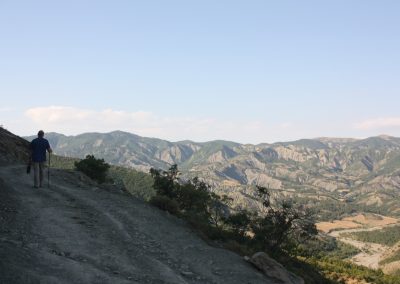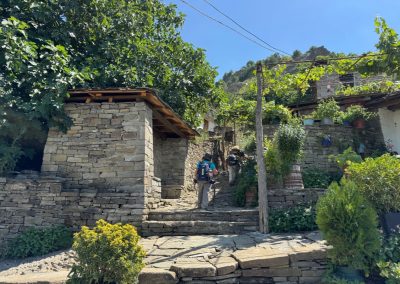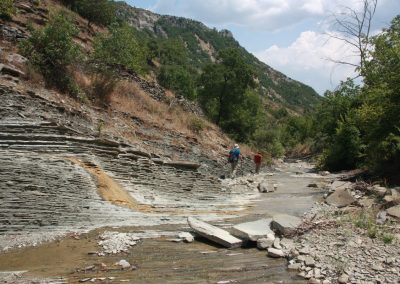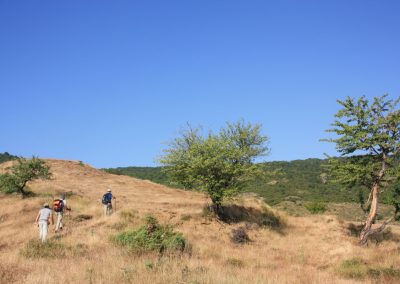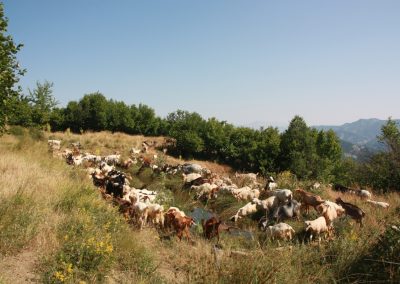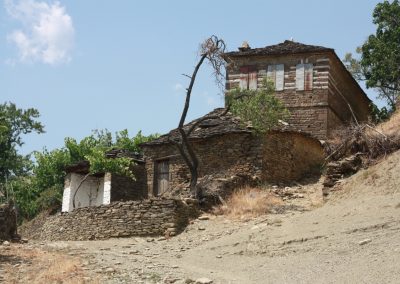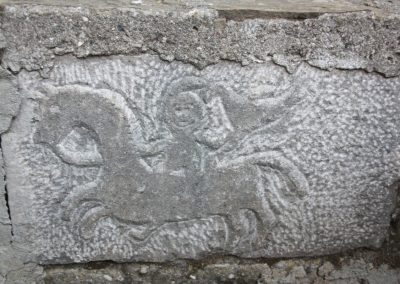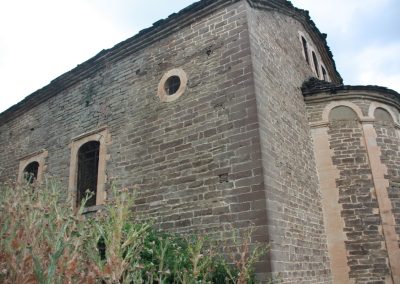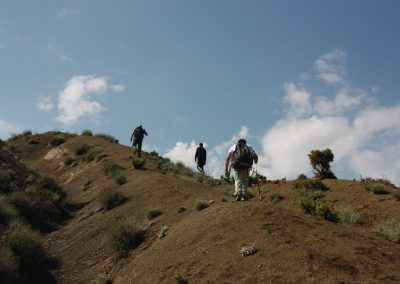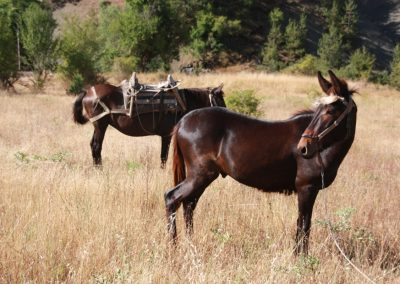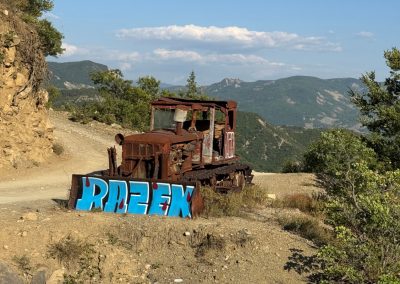Along an Age-Old Transhumance Route
A Visibility Survey of the Eastern Highland of the Upper Vjosa Valley, Përmet
Only a few kilometers to the east of the Upper Vjosa Valley, lie the mountain regions of Dangëlli. This ethnographic region is rich in forests, fertile meadows, streams, rivers, and gorges, with a significant portion of the territory included in the National Park of the Hotova Fir. The highlands have been an historical habitation area of the Vlachs, who settled in a number of villages centered around the village of Frashër. It is supposed that the Farsherot Vlachs – one of the largest Vlach groups of the Southern Balkans – derive their name from the village of Frashër.
During the Late Medieval period, Frashër was a large rural settlement and possibly a commercial hub along one of the principal itineraries of the transhumance route leading to other important historical Vlach centres further to the east, in the region of Kolonja and the town of Voskopoja (Moschopolis) in the Korça district.
Once a densely populated region with two- and three- storey stone built houses, churches, cobblestone alleys, fountains, cultivated plots lined by quite intricate terracing walls, and animal folds scattered across the mountain landscape, the region today remains an abandoned marginal zone.
For as long as the Vlach practiced long-distance transhumance, the Dangëlli region was one of the main summer settlements areas within the Upper Vjosa Valley. Access into the region was along a historical nomadic route originating from the lowland territories to the south and southwest, which diverged into alternative pathways before converging again at Frashër.
Building on this historical legacy, during the second half of July, the CeRPHAAL team, as part of the SECreTour project, conducted an extensive on-foot visibility survey along a branch of this ancient transhumance route, which leads toward the village of Frashër and passes through a number of other rural settlements in the area. The survey involved mapping pathways, documenting remains of previous settlements – both pastoral and non-pastoral- as well as assessing the cultural, environmental, and human resources nestled in these highland regions. Additionally, a series of interviews undertaken with local community members aided to better understand the socio-economic and cultural challenges currently faced by the inhabitants of these marginal territories.
The results of the survey will be presented and discussed later this year with representatives of the local administration, interested stakeholders, local guides, and other community members, with the aim of reflecting on and exploring how the historical route and the unique cultural and environmental resource of the region can be incorporated into sustainable local tourism strategies.



